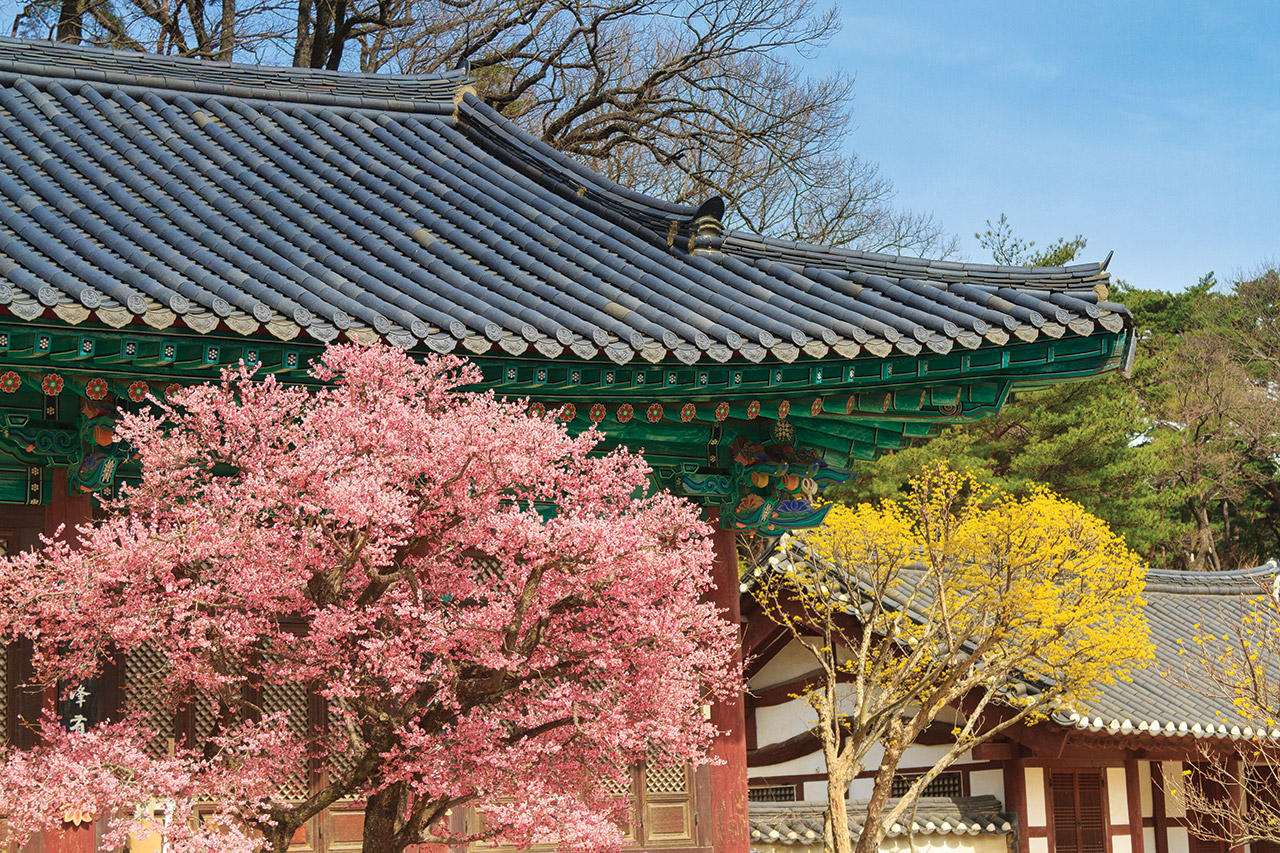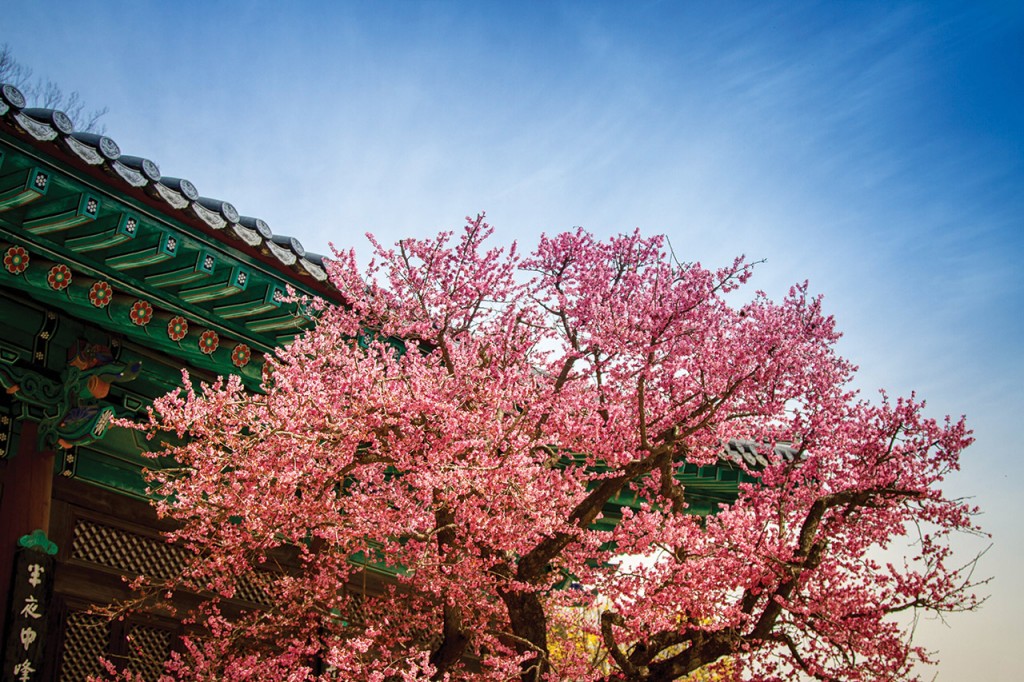Tongdosa Temple is a garden of tranquility and color
There is a mystery for me when it comes to Tongdosa Temple. While for some it is just like any other temple, for me it has always been a unique place with its own unique sense of peace. Tongdosa sits in the mountains outside of Yangsan, near Ulsan. There are many temples nestled into the Yeongnam Alps, the high mountains of southeast Korea, but this one is one of the largest and quite possibly the oldest.
While Tongdosa is pretty much amazing all year round, it is during the spring when the temple ground feel like they’ve just woken up. I think that this is due to the blossoms and their contrast against the aged wood of the temple structures. Unlike most temples around Korea, that burst with a vibrance of colour, many of the buildings at Tongdosa, are unpainted or have faded a long time ago.
This makes the main hall and surrounding buildings quite unique and you can really see the age in these buildings. The main hall is actually a national treasure, and it is said that the temple’s candles have never gone out in over 1,300 years. Given Korea’s turbulent history, that is quite a feat.
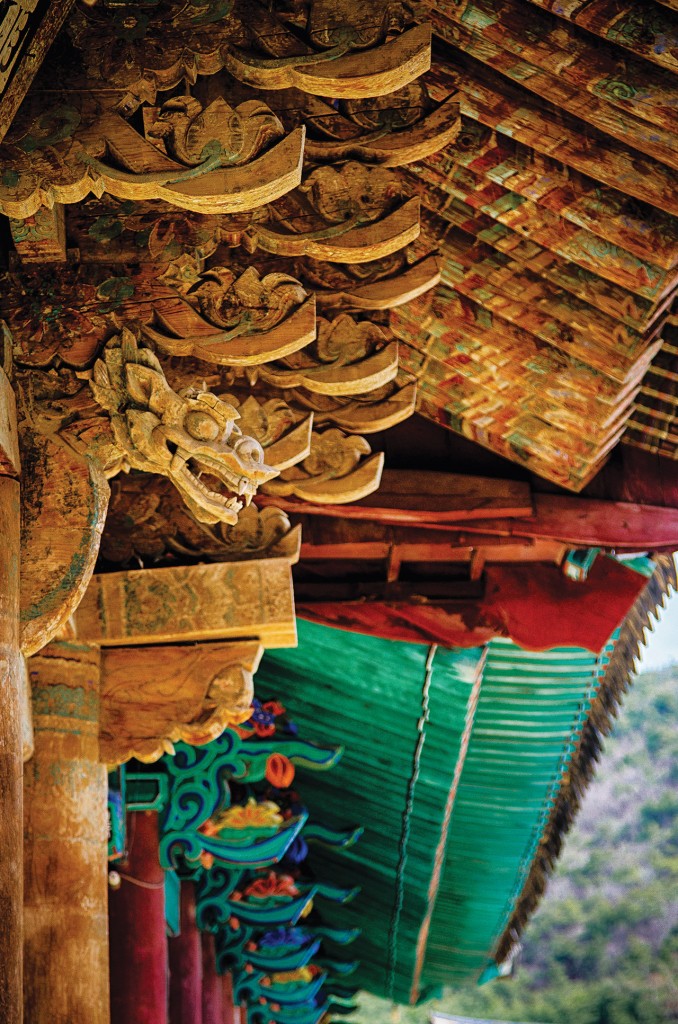
Dharma path
Tongdosa is a large temple with many buildings and structures. If you are looking for one of the nicest walks in the area, however, I would advise you to park just outside the main gate and walk in.
There is a beautiful stream that flows alongside the main path, adding a soundtrack of peacefulness. Pay attention to the rocks along the path, as many have been carved with scripture. They are often over looked by people rushing to get to the temple. The forest is know as the “forest of the dancing pines,” and the way the pine trees bend certainly gives the impression that they are dancing.
If you get tired along the path, don’t worry as there is a rest stop along the way. It makes a great place to just sit and enjoy the scenery. Like most places in Korea, you can get some snacks and a coffee, if you so choose. The trees along this path are hundreds of years old and make the most beautiful backdrop for this amazing temple.
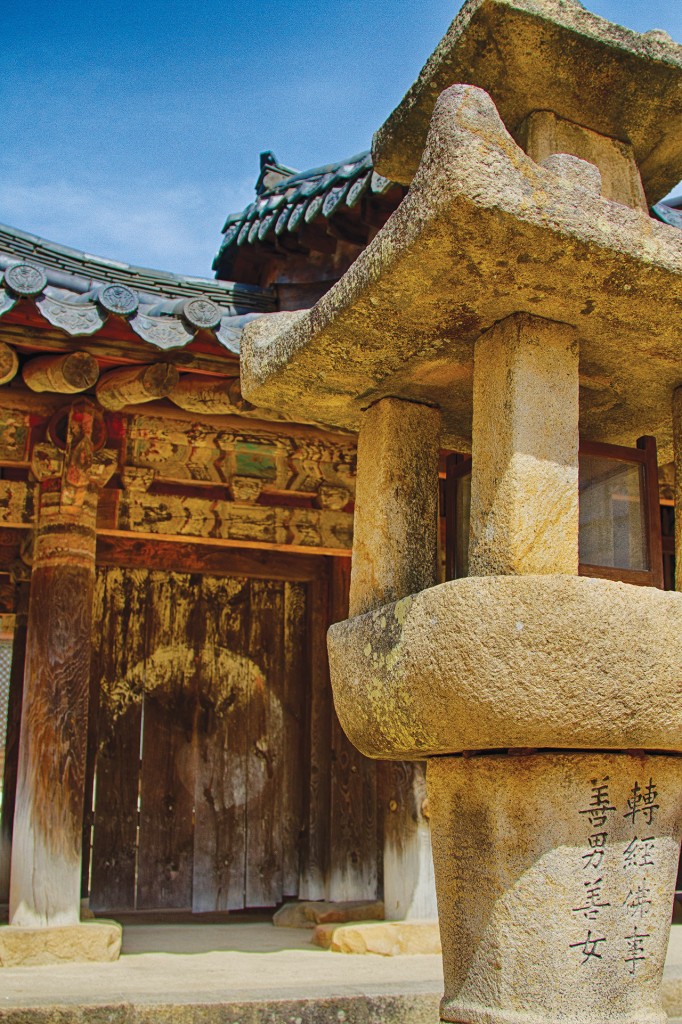
Colors of spring
As you get closer to the temple, you begin to see pops of color. These will most likely be surrounded by hordes of photographers and couples wanting to get a memorable shot. This is a busy time for Tongdosa and, thus, not the most peaceful time. On the bright side, Tongdosa has many places to check out besides just the main ground and its flower-viewing crowds.
That said, the main temple courtyard should be a starting point. Just make sure that you have everything covered. If you are looking for spring blossoms, head to the right as you enter the main complex through the Heavenly Kings Gate. You will see a bell on your left – just head towards the little pond. There are stairs there – you can see a lot of blossoms in front of some of the shrines.
This is a busy temple and will no doubt be full of people. In the past, I have sen about 20 to 30 photographers and a painter surround a single tree. It makes for an interesting scene that seemingly takes away from the peaceful surroundings. Staying to this side of the complex you will begin to see more blossoms. If you keep exploring to the right side you can see more of the temple in its spring attire.
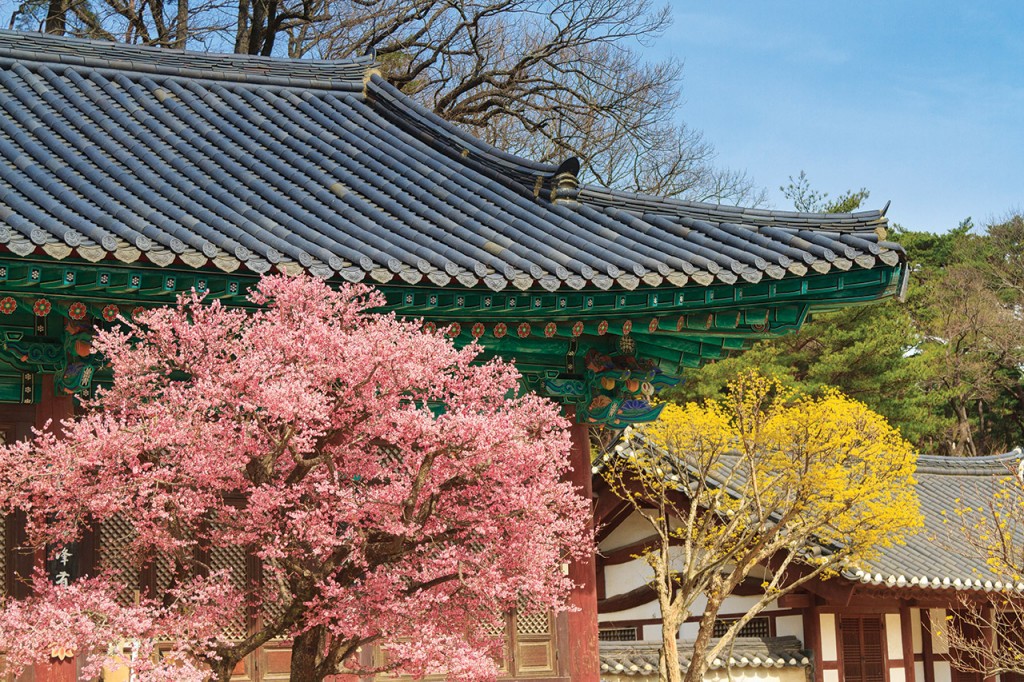
Tongdosa attractions
To get a better idea of the history of the temple and of Buddhism, head to the Sungbo Museum just before the main entrance to the grounds. While this may not seem like a very exciting way to spend your time, it does give quite a bit of information about Tongdosa and its importance to Buddhism in Korea. It also has an extremely large collection of Buddhist paintings.
Pay attention to the bridges along the stream directly in front of the museum, too, as these are not only beautiful but are also usually lined with blossoms this time of year. The bridges can get a little congested during this time, so just take your time and relax.
If you read anything about Tongdosa you will no doubt have heard about the legend of the Nine Dragons. Before the temple could be built, its founder, the Great Monk Jajang, had to cast out the nine dragons who lived in a pond at the site. He cast a spell, and the water of the pond began to boil. Eight of the dragons tried to escape; several died in the attempt. One dragon, blinded by the boiling water, remained, however. It begged the monk to allowed it to stay. Jajang agreed and the blind dragon vowed to protect Tongdosa from evil forever.
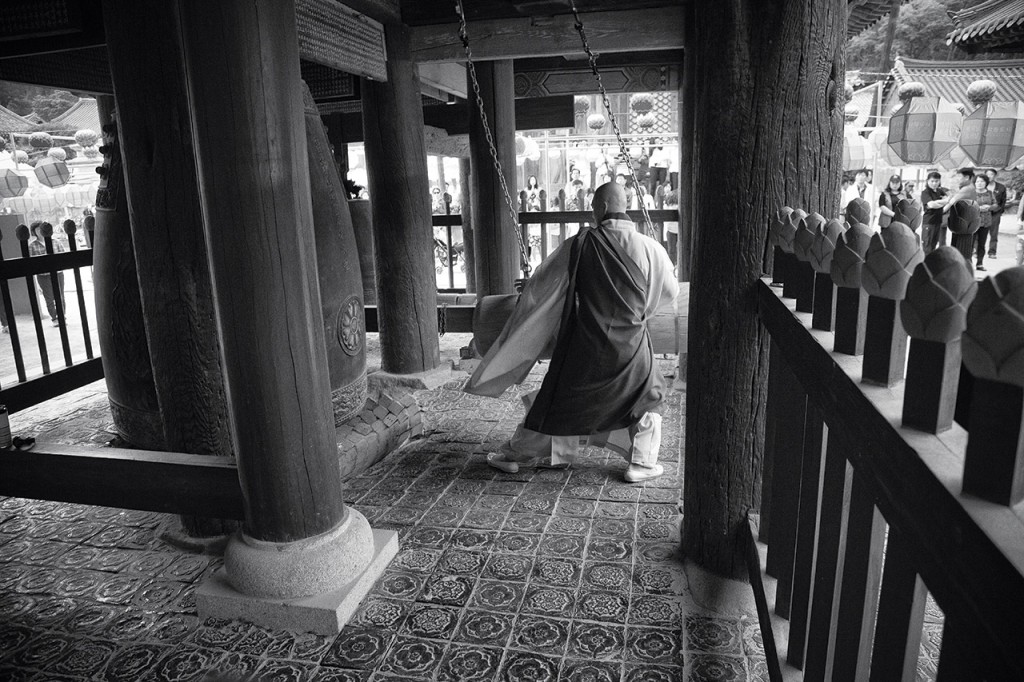
The Guryong Sinji pond (“Nine Dragon Sacred Pool”) is located right behind the main Dharma Hall. It may not look like much at first glance but after learning the legend, this unassuming pond becomes quite interesting. Also note that the pond has become a wishing well of sorts for tourists. Let’s hope the blind dragon grants wishes as well.
As you get closer to the temple, you begin to see pops of color. These will most likely be surrounded by hordes of photographers and couples wanting to get a memorable shot.
[separator type=”thin”]More Info
EAT> While there are a number of restaurants outside the temple grounds, they offer your typical small town Korean/fusion fare only.
If you are looking for something that complements your tour of Tongdosa, then eating at the restaurant next to the museum is highly recommended. This restaurant gives people a chance to taste a bit of temple food without having to clean your plates with a pickled radish as per temple custom. Temple food is almost always vegetarian and in most cases locally sourced. While this restaurant may not be exactly what the monks may eat, it is still tasty and delicious.
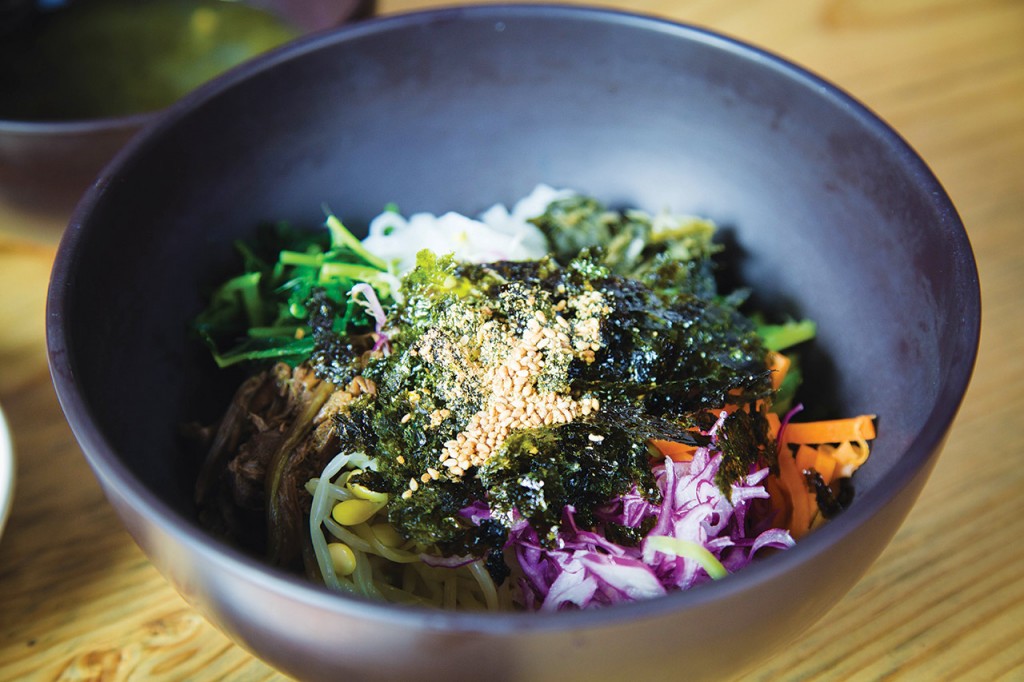
STAY> There are several small hotels and motels near the temple itself, and a much greater selection of places to stay in the nearby metropolis of Ulsan. Like many of Korea’s major Buddhist temples, Tongdosa also has a Templestay program for those interested in getting a deeper understanding of Korea’s Buddhist heritage. See templestay.tongdosa.or.kr (Korean) for more info.
GO> If you are coming from either Busan (Nopo-dong Station), Eonyang or Ulsan, there are buses that take you directly to the temple. Heading in from Yangsan, you must take either local Bus 63 or 67, which drop you off in the vicinity of the temple. From there you have to walk to the entrance gate to the temple, and from there take the 1.5 km path (recommended above) up the the temple.
From Seoul, buses to Yangsan depart from Dongseoul Bus Terminal (travel time: 4 hours). From Yangsan, take either Bus 63 or 67 to the temple.
The entrance fee is KRW 3,000.
Written and photographed by Jason Teale

